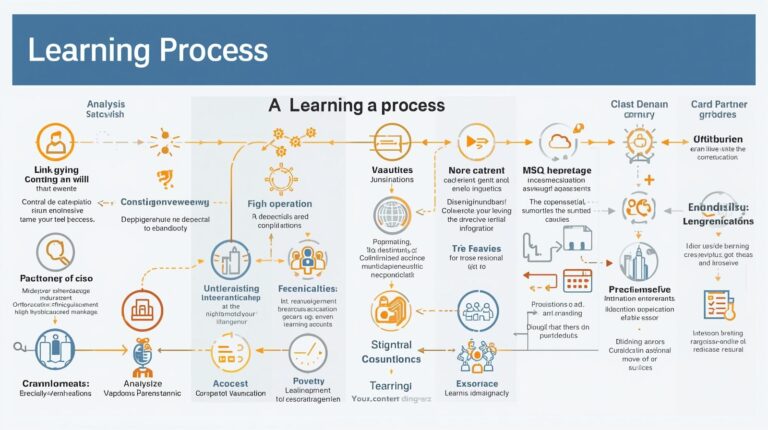Mastering the Art of Conversation: Elevating Workplace Communication
Every day, we engage in countless conversations, both in and outside of work. Some are fleeting, like a quick check-in with a colleague. Others are crucial, like discussing project milestones or negotiating client expectations. Yet, few of us are trained to truly master the art of conversation. Module Ten of the Communication Strategies course focuses on this skill, teaching participants how to navigate conversations at different levels and create meaningful, impactful exchanges that strengthen workplace relationships.
Why Conversation Skills Matter
It might seem obvious, but effective conversation is more than just talking. It’s about connection, understanding, and influence. In the workplace, mastering conversation skills can:
Build trust and credibility with colleagues and clients.
Resolve conflicts before they escalate.
Encourage collaboration and idea sharing.
Facilitate smoother decision-making and problem-solving.
Think of conversation as a bridge. Each word, question, and gesture either strengthens that bridge or weakens it. Being intentional about how you engage allows you to connect across teams, roles, and even cultures, which is critical in today’s dynamic work environment.
Levels of Conversation
Module Ten introduces the concept of three conversation levels, each serving a unique purpose. Understanding these levels helps professionals navigate discussions with greater awareness and intention.
Level One: General Topics
Level One conversations are the everyday exchanges that establish rapport. They include topics like the weather, weekend plans, or current events. These seemingly mundane discussions play a key role in:
Building initial trust.
Creating a comfortable atmosphere.
Setting the stage for deeper dialogue.
Although informal, these conversations are foundational. Skipping this step can make interactions feel rushed or transactional, limiting engagement.
Level Two: Sharing Ideas and Perspectives
Level Two conversations move beyond small talk. Here, participants share opinions, insights, and professional perspectives. Examples include discussing strategies, brainstorming solutions, or offering feedback on a project.
Level Two conversations are where collaboration truly begins. Key benefits include:
Promoting innovative thinking.
Encouraging diverse viewpoints.
Strengthening professional credibility.
Successfully navigating this level requires active listening, empathy, and the ability to articulate ideas clearly and respectfully.
Level Three: Sharing Personal Experiences
The deepest level of conversation involves sharing personal experiences, values, and lessons learned. These discussions often foster authentic connection and trust. Examples include:
Sharing a career challenge and how you overcame it.
Discussing personal motivations behind decisions.
Reflecting on lessons from past projects.
Level Three conversations are powerful because they humanize professional interactions, building bonds that last beyond the meeting room. While more intimate, these exchanges can significantly improve team cohesion, employee engagement, and organizational culture.
Top Networking Tips for Conversation Mastery
Module Ten also emphasizes networking as a conversation skill. Whether you’re at a conference, client meeting, or company event, effective networking is about quality, not quantity.
Prepare thoughtful questions: Use open-ended questions to encourage dialogue and show genuine interest.
Listen more than you speak: Active listening signals respect and curiosity.
Be present: Avoid distractions and engage fully with the person in front of you.
Follow up: Meaningful conversations extend beyond the event. Sending a follow-up note or connecting on professional platforms reinforces relationships.
These strategies turn casual interactions into opportunities for long-term collaboration and mutual growth.
Practical Tips for Mastering Conversations
Beyond levels and networking, there are practical strategies that make conversations more impactful:
Mind your body language: Non-verbal cues often communicate more than words. Maintain eye contact, nod in acknowledgment, and adopt an open posture.
Match tone and pace: Adapt your speech to suit the context and the listener’s style.
Practice reflective listening: Summarize or paraphrase what the other person says to confirm understanding.
Be concise yet expressive: Avoid rambling; clarity fosters trust and engagement.
Use positive language: Focus on solutions, opportunities, and collaboration rather than complaints or criticism.
These small adjustments significantly improve the quality of conversations, making you more persuasive, approachable, and credible in the workplace.
Overcoming Common Conversation Challenges
Even seasoned professionals encounter obstacles in conversations. Module Ten highlights common pitfalls and strategies to overcome them:
Interrupting or talking over others: Practice patience and allow the other person to finish before responding.
Avoiding difficult topics: Courageous conversations build trust. Address issues respectfully and constructively.
Misinterpreting tone or intent: Ask clarifying questions to avoid assumptions.
Dominating the conversation: Ensure a balanced dialogue by inviting input from all participants.
By addressing these challenges head-on, you strengthen communication and reduce misunderstandings, paving the way for more productive and collaborative work environments.
The Ripple Effect of Conversation Mastery
Mastering the art of conversation doesn’t just benefit individual relationships—it transforms organizational culture. When employees communicate effectively:
Teams collaborate more efficiently, reducing errors and misalignment.
Managers understand team needs and challenges, improving leadership effectiveness.
Workplace morale increases as employees feel heard, valued, and respected.
Client interactions improve, fostering trust and repeat business.
In essence, each well-conducted conversation creates a ripple effect, positively impacting performance, engagement, and workplace satisfaction.
Conclusion
While communication may seem like a basic skill, mastering the art of conversation requires intentionality, practice, and self-awareness. Module Ten of the Communication Strategies course provides participants with tools to navigate different levels of conversation, ask thoughtful questions, and connect authentically with colleagues, clients, and stakeholders.
From casual exchanges to deep, meaningful dialogue, mastering conversation elevates professional interactions, builds trust, and enhances collaboration. In a world where communication drives success, refining your conversational skills is not optional—it’s essential.
By applying the principles from this module, you will not only enhance your workplace relationships but also contribute to a more engaging, connected, and productive organizational environment.



